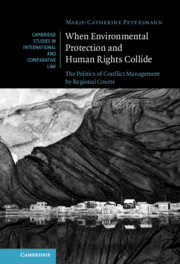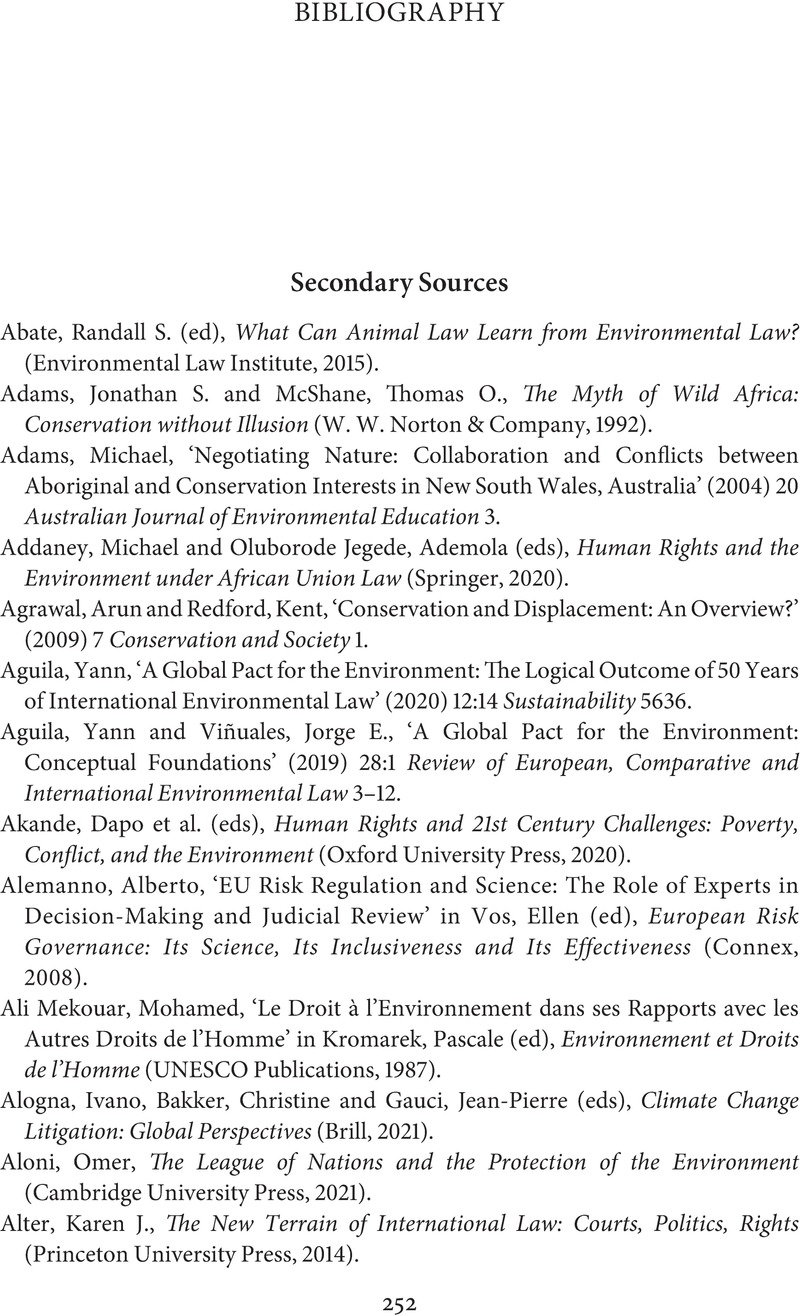 When Environmental Protection and Human Rights Collide
When Environmental Protection and Human Rights Collide Book contents
- When Environmental Protection and Human Rights Collide
- Cambridge Studies in International and Comparative Law 172
- When Environmental Protection and Human Rights Collide
- Copyright page
- Contents
- Acknowledgements
- Table of Cases
- Introduction
- Part I Constructing Synergies: Framing the Environment–Human Rights Interface
- Part II Conflict Mediation through Universalisation
- Conclusion
- Bibliography
- Index
- Cambridge Studies in International and Comparative Law
- References
Bibliography
Published online by Cambridge University Press: 20 October 2022
- When Environmental Protection and Human Rights Collide
- Cambridge Studies in International and Comparative Law 172
- When Environmental Protection and Human Rights Collide
- Copyright page
- Contents
- Acknowledgements
- Table of Cases
- Introduction
- Part I Constructing Synergies: Framing the Environment–Human Rights Interface
- Part II Conflict Mediation through Universalisation
- Conclusion
- Bibliography
- Index
- Cambridge Studies in International and Comparative Law
- References
Summary

- Type
- Chapter
- Information
- When Environmental Protection and Human Rights CollideThe Politics of Conflict Management by Regional Courts, pp. 252 - 282Publisher: Cambridge University PressPrint publication year: 2022


